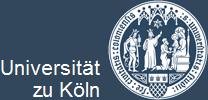First description of an euryoecious acanthoecid choanoflagellate species, Enibas tolerabilis gen. et sp. nov. from a salar in the Chilean Andes based on morphological and transcriptomic data
This page lists all metadata that was entered for this dataset. Only registered users of the CRC1211DB may download this file.
Feature
 Request download
Request download
Citation
Citation Options
Identification
| Title: | Main Title: First description of an euryoecious acanthoecid choanoflagellate species, Enibas tolerabilis gen. et sp. nov. from a salar in the Chilean Andes based on morphological and transcriptomic data |
| Description: | Abstract: In general, acanthoecid choanoflagellates have been described to occur exclusively in brackish water to marine habitats. Only recently, two studies have proven their existence in inland waters. One of them has shown, that an acanthoecid species from a small lake (near Apia on the island of Upolu, Samoa) is strictly freshwater adapted, not able to tolerate even brackish water. In this study, we present the first euryoecious acanthoecid species, able to live and reproduce in freshwater as well as under hypersaline conditions. The new species, Enibas tolerabilis gen. et sp. nov. was isolated in 2017 from the Salar de Ascotán in the Altiplano at 3750 m a. s. l., Northern Chile. The salinity at the time of sampling was 6 PSU. A series of autecological experiments have revealed a salinity tolerance from freshwater up to 70 PSU. In our phylogenetic analysis, E. tolerabilis gen. et sp. nov. clustered within the family of Acanthoecidae, forming a well-supported sister clade together with two other, environmental choanoflagellate sequences. We erected a new genus, Enibas gen. nov. and described the morphology, molecular biology and autecology for E. tolerabilis gen. et sp. nov. which has a stephanoecid-like lorica morphology. We emphasize that the definition of the genus Stephanoeca, being polyphyletic, is in urgent need of revision as we showed that this morphology is present in both acanthoecid families. |
| Identifier: | 10.1016/j.ejop.2018.11.004 (DOI) |
Responsible Party
| Creators: | Sabine Schiwitza (Author), Frank Nitsche (Author), Hartmut Arndt (Author) |
| Publisher: | Elseviere |
| Publication Year: | 2019 |
Topic
| CRC1211 Topic: | Biology |
| Related Subproject: | B3 |
| Subject: | Keyword: Biodiversity |
| Geogr. Information Topic: | Inland Waters |
File Details
| Filename: | Schiwitza2018EuropJProt.pdf |
| Data Type: | Text - Article |
| File Size: | 1.2 MB |
| Date: | Available: 30.11.2018 |
| Mime Type: | application/pdf |
| Data Format: | |
| Language: | English |
| Status: | Completed |
Constraints
| Download Permission: | Only Project Members |
| General Access and Use Conditions: | According to the CRC1211DB data policy agreement. |
| Access Limitations: | According to the CRC1211DB data policy agreement. |
| Licence: | None |
Geographic
Specific Information - Publication
| Publication Status: | Published |
| Review Status: | Not peer reviewed |
| Publication Type: | Article |
| Article Type: | Journal |
| Source: | European Journal of Protistology |
| Source Website: | www.sciencedirect.com |
| Volume: | 67 |
| Number of Pages: | 8 (106 - 113) |
Metadata Details
| Metadata Creator: | Frank Nitsche |
| Metadata Created: | 12.06.2019 |
| Metadata Last Updated: | 12.06.2019 |
| Subproject: | B3 |
| Funding Phase: | 1 |
| Metadata Language: | English |
| Metadata Version: | V50 |
Metadata Export
| Metadata Schema: |
Dataset Statistics
| Page Visits: | 441 |
| Metadata Downloads: | 0 |
| Dataset Downloads: | 1 |
Dataset Activity
Feature
 Download
DownloadBy downloading this dataset you accept the license terms of CRC1211DB Data Protection Statement
Adequate reference when this dataset will be discussed or used in any publication or presentation is mandatory. In this case please contact the dataset creator.
Adequate reference when this dataset will be discussed or used in any publication or presentation is mandatory. In this case please contact the dataset creator.





